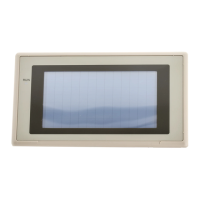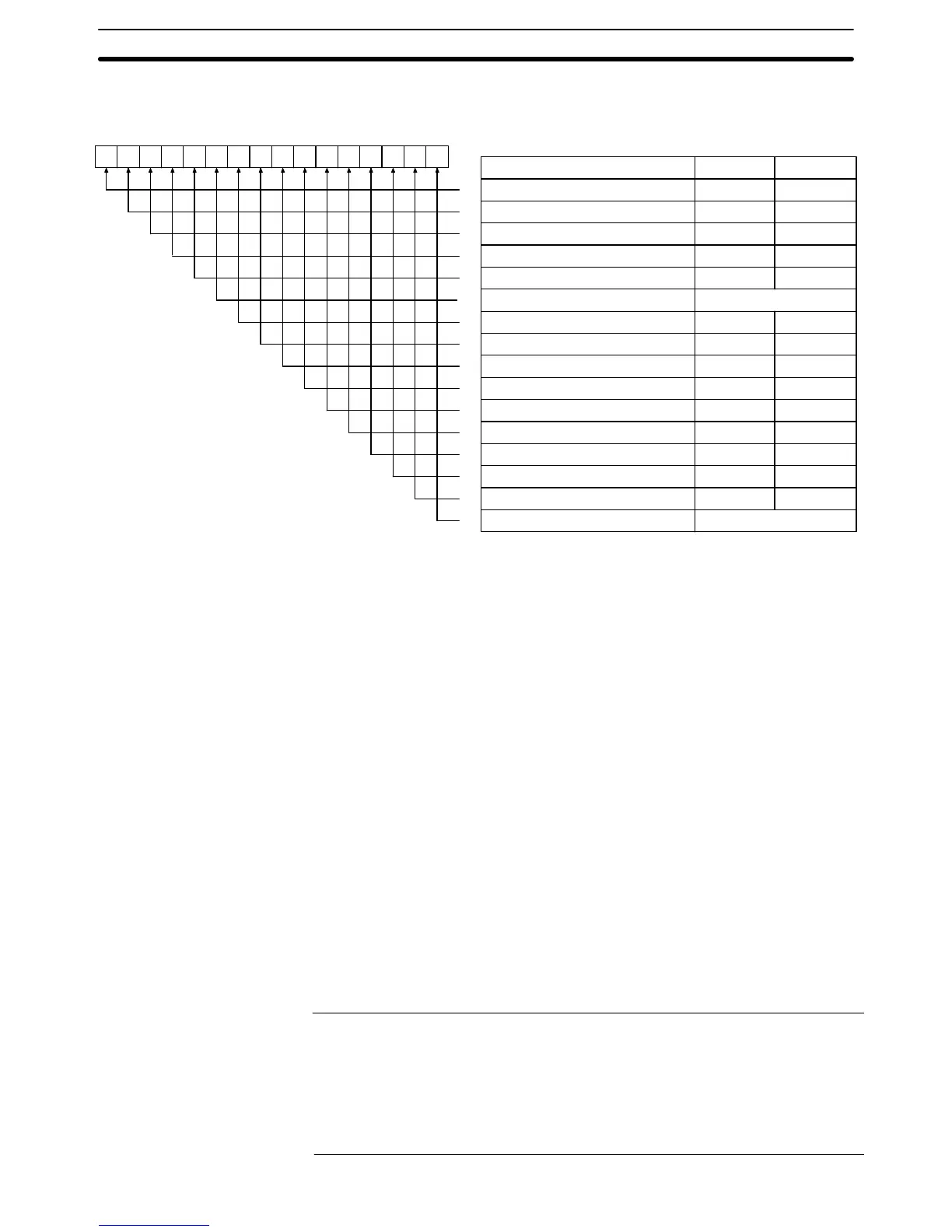3-2SectionBuzzer, Backlight, and Display Control
295
The bit for controlling the PT status (PT status control bit) is provided at the fourth
word (n + 3 words) from the beginning of the PT status control area.
15 14 13 12 11 10 9 8 7 6 5 4 3 2 1 0 Bit
0
0
Controlled Item
Screen display
Processing priority registration (for NT link (1:N))
Continuous buzzer
Intermittent buzzer (short)
Display history initialization
Not used
Intermittent buzzer (long)
Backlight mode
Screen printing
PT window opening
Numeral/character string input
PT screen switching
Memory table copy execution
Memory table copy type
Alarm history initialization
Not used
1 (ON)
Performed
Registered
Sounded
Sounded
Performed
Sounded
Lit
Performed
Disabled
Disabled
Disabled
Performed
Numeral
Performed
0 (OFF)
Not performed
Canceled
Stopped
Stopped
Not performed
Stopped
Flashing
Not performed
Enabled
Enabled
Enabled
Not performed
Character string
Not performed
Always 0
Always 0
15
14
13
12
11
10
9
8
7
6
5
4
3
2
1
0
Bits 2 and 3 are not used when the PT is in NT20S or
NT30/620 compatible mode.
Bit 7 is not supported by the NT21.
To control the backlight status during the operation of the PT, operate the PT sta-
tus control area as indicated below.
Set 0 (OFF) or 1 (ON) for bit 8 in the fourth word (n + 3 words) from the beginning
of the PT status control area.
Word n + 3, bit 8
• To turn the backlight on: 0 (OFF) 1 (ON)
• To flash the backlight: 1 (ON) 0 (OFF)
3-2-4 Turning off the Screen
By turning off the screen while it is not in use, the backlight lasts for a long time
and, at the same time, afterimage on the display panel can be prevented. The
backlight is turned off automatically when the screen is turned off. If the screen
saver function is set to Display, however, it is not possible to prolong the life of the
backlight since it is not turned off when the screen is turned off.
The PT provides the following two methods for turning off the screen.
• Using the screen saver function of the PT
• Operating the PT status control area
Note To prevent the formation of an afterimage, either use the screen saver function
or periodically switch screens.
Reference: The screen can be made to enter the no-display state by specifying screen No.
0. In this state, however, the backlight remains lit or flashing.
While the screen is in the no-display state, only screen switching operations
from the host are permitted.
Even though the screen display is set to off, the display of the screen immedi-
ately before the screen is turned off remains output by the PT.
Operation

